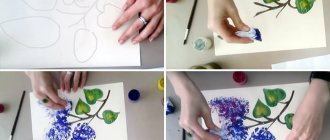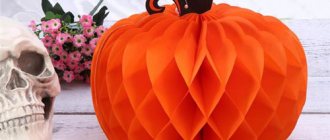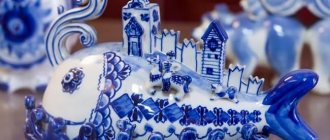Abstract of the educational activity for light construction "Goalkeeper" with children of the preparatory group
Summary of GCD for light construction "Goalkeeper"
with children of the preparatory group
Target:
To create conditions for children of senior preschool age to model the “Goalkeeper” and program him to perform mechanical actions.
Tasks:
Develop skills in working with the LEGOWeDo constructor.
Develop communication skills and cognitive interest.
Cultivate the ability to cooperate with each other, accuracy, and thrift.
Equipment:
LEGOWeDo construction kits, LEGO EducationWeDo program, laptop, interactive whiteboard, multimedia presentation “Football”.
Vocabulary work:
Belting. Software blocks: “Distance sensor”, “Turn motor on...”, “Motor clockwise”, “Motor counterclockwise”, “Input Random number”, “Cycle”, “Start” and “Wait”.
Progress of activities:
Stage. Establishing relationships
Educator:
Guys, we discussed what event is expected in our country in 2022?
Children:
Soccer World Cup.
Educator:
Tell me, what do you know about football?
Children:
World Football Day is celebrated on December 10th. Football is played by 11 people, there is a goalkeeper, defenders, midfielders and forwards, and fans.
Educator:
A football match is a very interesting and exciting spectacle. It’s not for nothing that football is called the game of millions. Some of our guys are on the street, while walking, football battles unfold. Football players must be very resilient to be on the move throughout the match.
There is a picture of a goalkeeper on the slide.
Educator:
Guys, who is that in the picture?
Children:
Goalkeeper.
Educator:
What should a goalkeeper do?
Children:
Catch balls so as not to miss goals.
Educator:
Is it easy to be a goalkeeper? Now I suggest you play mini-football. But in order not to lose in football, I suggest you build a model of a goalkeeper and play with him.
Educator:
So, you and I will again work with the LEGO constructor in our “Lego Planet” circle and assemble a goalkeeper who will move right and left, protecting the goal from the ball. Let's set it in motion using a computer program.
Educator:
Today we will assemble a model of a goalkeeper, create a program to protect the goal from the ball, and then test the created model.
Educator:
Let us repeat what we must accomplish today.
Action plan
Build a goalie model.
Create a program.
Test the goalie model.
Evaluate your work.
The teacher and children discuss the rules of work when constructing
Stage. Construction
Educator:
Let's build a model of a goalkeeper. For work we will need the following parts, find and prepare them for work.
GCD summary. TOPIC: “FIXIK VISITING PRESCHOOL CHILDREN.” (construction from Lego)
Educational activities of an artistic and aesthetic orientation made from Lego develop technical thinking in preschoolers, and joint work with parents contributes to the development of social and communicative development. Topic: “Fixie visiting preschoolers.”
Age group: senior.
Goal: development of technical thinking in children.
Integration of educational areas: “Artistic and aesthetic development”, “Socio-communicative development”, “Cognitive development”, “ Speech development”, “Physical development”.
Tasks:
- Form the development of prerequisites for creating a transport model according to the scheme, the perception of music. (Artistic and aesthetic development).
- Develop cognitive activity through constructive activities with the help of new generation construction sets. ("Cognitive Development")
- Enrich and activate your vocabulary. Improve the dialogical form of speech, the ability to formulate your point of view (Speech development).
- Form the development of prerequisites for creating a transport model according to the scheme, the perception of music. (Artistic and aesthetic development).
- Develop the ability to work in pairs with adults, distribute responsibilities without interfering with each other. (Socio-communicative development).
- Develop children's motor activity and coordination of movements (Physical development).
Preliminary work: Observation of transport during a walk, transport on which food is brought to kindergarten, conversations, games with cars, and construction sets.
Methods and techniques:
- practical: Lego construction sets, finger gymnastics;
- visual: diagrams, balloon, Fixik toy, box;
- verbal: direct questions, leading questions, explanations, riddles, reading a poem;
- playroom: Lego construction sets,
Materials and equipment: a balloon, a Fixik toy, a box with a Lego constructor, riddles about transport, a player, a flash drive.
| Children's activities | Forms and methods of organizing joint activities |
| Cognitive and research | Naming helper objects. |
| Communicative | Conversation, guessing riddles, situational conversation, questions |
| Perception (fiction and folklore) | Telling riddles, reading a poem |
| Motor | Finger gymnastics, |
| Musical | The sound of musical works |
Logic of educational activities
| № | Activities of the teacher | Activities of pupils and parents | Expected results |
| 1. | Organizing time. - Everyone gathered together in a circle. You are my friend and I am your friend. Let's hold hands tightly and smile at each other. - Dear, good, how are you doing? Today design has come to visit you. (knock on the door) | Children and parents stand in a circle, hold hands, smile, and answer the question. | A positive emotional mood for educational activities has been created. Friendly relationships between peers and parents. The ability to perform movements according to the text is consolidated. |
| - Is someone knocking? May I take a look? (goes to the door, brings in a balloon with Fixie). | They look at the door with interest, wait, smile, rejoice at Fixik’s appearance. | Voluntary attention is attracted. | |
| 2. | "The Appearance of Fixik" (teacher on behalf of Fixik) – Hello dear parents and you children: girls and boys! Please name the topic of the week? What types of products are there? Where can you buy groceries? What happens when stores run out of food? (praises for answers) | Children and parents answer questions, name products and transport. | Developed dialogical communication, the ability to answer in full sentences. Knowledge of product classification has been generated. |
| 3. | "Riddles about transport" – I came for a reason. My fairytale friends have run out of food in their stores and have nothing to bring. I don’t even know what to do? - Well done, but first let’s remember what transport has. Puzzles
| They listen attentively and offer to arrange transport. | Developed attention and thinking. |
| 4. | "Design department" – Transport is made by design engineers. Do you want to become one? They circled left and right and into the engineers designers have turned. (hands out Lego construction sets, turns on music). | They listen, answer the question, follow the text, choose a pair, sit at the tables, work according to the scheme together with parents. | Formed: constructive thinking, working according to a scheme, social skills of mutual assistance. Fine motor skills are affected. |
| 5. | Reflection. – So we returned from the design bureau. – I want to ask, what kind of transport did you get? Please tell me, who will you deliver the products to in your transport? Reading a poem. "Lego" is a smart game, enticing, cunning. It's fun to play with her. Build, compose, search! It’s also interesting for adults: it’s useful to play with Lego. Thank you very much. | They answer questions, name the transport and the fairy-tale character for whom the transport was made, and listen to the poem. | Dialogue speech has been developed, the ability to answer questions in complete sentences. Emotional responsiveness to the outcome of the lesson is developed. |
Summary of an open lesson on LEGO construction for children of middle preschool age
Municipal budgetary preschool educational institution
"Kindergarten No. 37"
Summary of an open lesson on LEGO construction
For children of middle preschool age
"Adventures in Legoland City"
Completed by: Shishkanova V.D.
Rostov-on-Don, 2020
Relevance. LEGO construction and educational robotics are among the most effective innovative technologies for developing technical thinking in preschool children.
LEGO constructors have high educational capabilities, versatility, high aesthetic characteristics, provide an opportunity to introduce students to technical creativity, contribute to the formation of the inclinations of engineering and technical thinking, the development of attention, imagination, memory, thinking, communication skills, the formation of coherent speech, and the enrichment of vocabulary .
Robotics in kindergarten is not just a design activity, but a powerful, innovative educational tool. Combining elements of play and experimentation, it promotes the development of technical creativity and the formation of scientific and technical professional orientation in children of middle preschool age.
Target:
Developing children's ability to visually model through LEGO construction sets. Development of technical creativity and the formation of scientific and technical orientation in children of middle preschool age using the LEGO constructor and the HUNA Kicky constructor (Kicky Junior and Kicky Senior, Education series. Lego Mindstorms Education, Lego Duplo, Lego City, Lego Bionicle, Lego Ninyago, Lego Friends
Tasks:
Educational:
Develop visual and spatial perception; develop visual and effective thinking.
Educational:
intensify attention aimed at continuing the design of the building; promote the ability to carry out elementary analysis of objects, highlight the whole and parts; convey the characteristic features of the building, based on the diagram. Strengthen children’s ability to build according to a model. Freely think and fantasize.
To form primary ideas about design and robotics, and to develop children’s coherent speech.
Educators:
To educate children in the ability to work in a team of peers, helping each other in joint construction.
The product of the project was the joint construction of the city of Legoland, the city of the future, in which, according to our students, only happy Legomen will live.
Material: gel balloons 6 pcs.; presentation for the lesson (recording of a phone call, Raven’s message, video exercise with lego men, video presentation “Types of Lego”, photo of an amusement park, slide with a hint, etc.). LEGO - men, LEGO for building magic
Ship, Legokorol (cornival costume); model of an amusement park (with walls and areas for attractions), robot; individual sets with construction kit parts for attractions, building samples for children, diagrams for each child. Sets of Lego constructors of different types for showing children: “Lego education”, Lego We Do, Lego Mindstorms Education), Lego Duplo, Lego City, Lego Bionicle, Lego Ninyago, Lego Friends, etc.)
The teacher meets the children, inviting them to go to the carpet. The phone rings. Raven's video message to the guys is turned on.
Crow:
- Hello guys! I am the General Manager of Travel. I have an order for you from the people of Legoland. The evil wizard Ogel stole the smiles of the Lego people and destroyed all the rides in their favorite magical amusement park. The Lego people ask you to visit their country and help renovate the park. If the rides are repaired, the evil spell will be broken and smiles will return to the Lego residents. HURRY TO HELP!
Teacher:
- Guys, did you understand everything that Raven said? From whom did he have an order?
What happened at Legoland? What are the residents asking for?
- Guys, you agree to help LEGO people. They are so interesting and unusual
- To help them we need to go there.
- Do you agree? How to get there? (Children's answer options)
“And I propose to build a boat, but not a simple one, but a magical one.” How is she unusual?
It consists of LEGO parts.
Find the right brick
LEGO boat - build a country.
Educational game "Magic Boat"
Teacher:
— To build a boat, you need to follow certain rules: first, each of you, in turn, will come up and select only 1 brick. The bricks must be different: different either in color or in size. I'll start building and lay the first brick piece. Now you must continue building the magic boat. But be careful!
Let's say the magic words:
One two Three,
Build a boat in LEGO - a country
- Now let's start building the boat. I'm laying the first brick. Who has the right ones? (helps to match parts by color or size.)
- Is your brick similar to mine? By color or size?
- Why did you put this brick up?
— Have you all placed your bricks? Is the boat ready?
“So that no one gets lost on the way, let’s cling tightly with our little fingers, like LEGO pieces.”
- We can hit the road. We will now say the magic words:
Take your friends with you.
And get into LEGO - the country.
The music of the sea is turned on.
Teacher:
We are with you in LEGO LAND.
Look, His Majesty the Legion King greets us. And here is the amusement park (they go to the table with the park
). Let's hurry to him!
- Look how wonderful and noisy it once was! I see a wonderful steam locomotive, which probably had fun riding legomen, and an attraction with carousels, which are really destroyed. Do I need to restore them? How to do this?
- Let's look at what they are made of? (Children's answers: from parts of different construction sets)
Teacher:
- That's right, guys. Please note that the walls of the house are built from the construction kit you are familiar with. And the attraction, steam locomotive and carousel are made from an unusual construction set. I will now introduce you to the types of these constructors.
Presentation “Types of constructor”
(constructor “First Mechanisms”, construction set “Simple Mechanisms”, educational robotics construction set (Lego Mindstorms Education), Lego Duplo, Lego City, Lego Bionicle, Lego Ninyago, Lego Friends)
Teacher:
- Now let's rest... Raise your eyes up... and look at the Lego exercises that the Lego men sent us.
Exercise for the eyes.
(Showing video of eye exercises)
(Eyes up, down, right, left, opened wide in surprise, closed their eyes tightly, blinked.)
Details, details,
You are not tired of sleeping.
This morning
It's time for us to build.
We are starting renovations.
- Now we need to break into pairs. To do this, select the legomen who will relax in this park. Have you chosen?
R
-No. Lego men are broken. We need to fix them.
P
- Guys, let’s quickly fix them... Well, they’re fine again.
Teacher:
To proceed to the next task you need to solve the riddle.
Drinks gasoline like milk, can run far. Carries goods and people. You know her, of course?
-We can start building the car.
-Well done guys, you completed this task too.
-And here are the carousels that the evil wizard Ogel broke. Let's fix them guys? Can we? ( Children's answers)
-Now each of the pairs will take one broken carousel. Containers with parts are on the tables, and there are also drawings from which everything can be restored. Select the blueprints of your model, stand two at a table, analyze the level of malfunction of the carousel and begin repairs.
(Work in pairs: providing assistance by showing, additional explanation, support, approval.)
— The carousels are fixed! We need to seat and ride Lego men.
We have collected little people and a carousel machine, let's think about what else our little people need. Where does he live? Where is he walking?
What do our little people need? (house, park, playgrounds, etc.)
.Teacher:
- Well done boys! The attraction and carousels have been repaired, which means we are already getting closer to bringing smiles and good mood back to Lego residents. Leave everything at your workstations for now. I see that you are a little tired, let's rest.
Physical school
(The video on the screen turns on, the children repeat the movements after the Lego men)
Teacher:
— Have you rested?
It was not in vain that we repaired the attractions,
Let's continue the good deeds?
Now let's come to our amusement park. Lego robots remained unrepaired (I pick them up). Reasoning: So, the details seem to be all in place. But why doesn't he go? What do you guys think? (Children's answers).
- Let's turn to the tip of the Lego residents, they sent us a video presentation in which there is a circuit for fixing the robot. Attention to the screen.
(Presentation show)
Teacher:
We will use conditional algorithms. In order for the robot to make informed decisions, certain conditions must be used. A conditional algorithm is an algorithm in which, depending on the fulfillment or non-fulfillment of some condition, either one or another sequence of actions is performed. For EV3 robots, a condition often compares the value of a sensor and, depending on whether the condition is met, a set of necessary commands is executed. Let's analyze the operation of a conditional algorithm using the example of programming the Shy Dog robot. Algori
If we get very close to the robot, it moves away from us “afraid that we will hit it.” If we move too far, he follows us “scared, left alone”
(inclusion of the presentation, and your own explanation that in order for the robot to move, you need to make noise. Or put an obstacle. Tell why.
Teacher:
- Well done boys! You have understood the clue and will find it.
(the teacher tells how the model works, the child activates the robot).
Teacher:
—
Let me put it in the right place.
Everything is ready, let's try to launch our robot (the robot is moving).
— Guys, the robot assistant has left and I feel that good mood and smiles are returning to the Lego residents. Let's say the magic words to completely dispel their bad mood:
We are with intelligence and intelligence
We build everything differently.
This is how it happens in LEGO country -
Everything we love comes to life.
- Well done boys! You are great masters and good wizards! The evil spell has left Legoland and joyful laughter can be heard everywhere! Why do you think? How did you help the residents today? Or maybe you remember the names of the designers you worked with?
Thrive LEGO Country
And it's time for us to return home.
— The Lego King says thank you and gives you a magic ball. With it you will quickly get from the magical Lego land back to yourself. Thank you guys! You can be relied on, you will always help.
Look, we have a whole city. You showed me and the guests that you are real builders. Look how well done you are, today you showed your skills, creativity, fantasy, imagination. Let's say goodbye to everyone.





